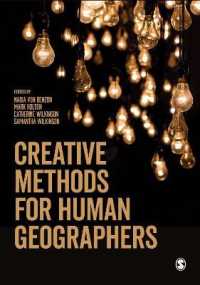- ホーム
- > 洋書
- > 英文書
- > Politics / International Relations
Full Description
What explains patterns of representation - of women and ethnic minorities - in government cabinets? The authors argue governments diversify their cabinets when (1) a minority group - and it need not be ethnic - is sizable and can mobilize (political competition); and/or (2) the general population believes in and expects the inclusion of minorities (popular norms). The authors test their argument using original cabinet data from Asia and Europe (N=93) 1960-2015 and a most-similar design of four case studies. They identify the gender and ethnicity of 91,000 country-year-minister observations - with consideration of the rank of their ministerial portfolio. They find evidence that in countries where there is political competition and/or popular norms, cabinets have fewer double-hegemons. However, this does not necessarily suggest minorities are holding portfolios of substantive prestige. This project offers a way to study intersectionality in democratic representation and political institutions.
Contents
1. Introduction; 2. A Theory on Minorities in Cabinets; 3. Minorities and Cabinet Compositions; 4. Minorities and Portfolio Prestige; 5. Minorities in Cabinets in Four Cases; 6. Democracy and Cabinet Composition; 7. Discussion: What Next?.








